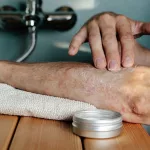Ever caught yourself munching on ice, noticing a strange ringing in your ears, or seeing a pinkish swell on your tongue and thought, “Maybe I’m just being weird”? You’re not alone. Those odd clues can actually be iron deficiency symptoms trying to get your attention—sometimes long before you feel the classic fatigue.
Iron is the body’s fuel‑injector for oxygen, but when the tank runs low, the engine sends out a handful of quirky warning lights. In this post I’ll walk you through the five “weird” signs that often hide in plain sight, why they happen, and what you can do about them. Grab a cup of tea, get comfortable, and let’s demystify these signals together.
Why Iron Matters
Iron isn’t just the metal that makes your blood red; it’s a multitasker. It builds hemoglobin—the protein that ferries oxygen to every cell, powers enzymes that keep your immune system humming, and even helps your brain make neurotransmitters. When iron levels dip, the body’s oxygen delivery falters, and the organs start sending out SOS messages.
According to Healthline, the most common iron‑deficiency signals are fatigue, pallor, and shortness of breath. But the hidden gems—tongue swelling, pica cravings, restless‑leg tingles, sudden hair loss, and ear ringing—are just as important, especially when they appear without obvious tiredness.
Weird Signs
Let’s dive into each of these unexpected symptoms. Take notes, because the next time you notice one of them, you’ll know exactly what to ask your doctor.
Tongue Swelling
Imagine waking up with a smooth, sore, or unusually large tongue that feels like a tiny carpet. This condition, often called glossitis, can be bright red or white‑coated and may make talking or eating uncomfortable.
Why does it happen? Iron is a co‑factor for enzymes that maintain the health of the delicate cells lining your mouth. Without enough iron, those cells become inflamed, leading to that uncomfortable swelling.
When to act: If the swelling lasts more than a couple of weeks, interferes with eating, or is accompanied by cracks at the corners of your mouth, schedule a blood test. It’s a simple check that could save you from a lingering problem.
Pica Cravings
Ever found yourself craving ice, dirt, chalk, or even raw paper? That’s called pica, and while it sounds like a quirky habit, it’s a well‑documented clue for iron deficiency.
The science behind it is still unfolding, but researchers think a low‑iron brain disrupts dopamine pathways, nudging us toward non‑food items that somehow “feel right.”
Spotting pica early is crucial because it can lead to gastrointestinal irritation or dental issues. If you notice a persistent urge for non‑food items, ask your clinician to check your ferritin levels.
Restless‑Leg Syndrome
Do your legs feel like they’re doing a midnight dance—tingling, crawling, or an uncontrollable urge to stretch? That’s restless‑leg syndrome (RLS), and it’s surprisingly linked to iron status.
Low ferritin (often below 50 ng/mL) can trigger RLS because iron helps regulate the neurotransmitters that calm leg muscles. When iron is scarce, the system goes haywire, especially at night.
If you’ve been tossing and turning for months, or your partner jokes that you’re “shaking a tambourine with your legs,” it might be time to get a ferritin test. Treating the deficiency often eases the restless feelings dramatically.
Hair Loss
Finding more hair than usual on your pillow or in the shower can be alarming. While stress and hormones are popular suspects, iron deficiency is a silent partner in many cases.
Hair follicles need iron to produce the proteins that keep strands strong and growing. When iron drops, the follicles go into “survival mode,” and you may notice diffuse shedding, especially on the crown.
If you see a noticeable increase in hair loss that lasts more than a few weeks, consider a CBC and ferritin test. Replenishing iron can often reverse the shedding within a few months.
Ear Ringing
That persistent “whoosh” or “buzz” in your ears—known as tinnitus—can be annoying, but it’s also a possible iron‑deficiency red flag.
Low oxygen delivery to the auditory nerve can irritate the tiny hair cells that translate sound, leading to phantom noises. While not every case of tinnitus means iron deficiency, it’s worth checking when it appears alongside other odd symptoms.
If the ringing feels new, is steady, and you’re also dealing with one of the other signs listed here, ask your doctor for an iron panel. Often, addressing the deficiency reduces the noise substantially.
Differentiating Signs
Some iron‑deficiency signals overlap with other conditions—think fatigue with thyroid issues, or hair loss with hormonal changes. Below is a quick comparison to help you tease them apart.
| Condition | Key Symptoms | Typical Lab Tests |
|---|---|---|
| Iron Deficiency | Tongue swelling, pica, RLS, hair loss, tinnitus | CBC, low ferritin, low transferrin saturation |
| Hypothyroidism | Weight gain, cold intolerance, dry skin | TSH, free T4 |
| Chronic Disease Anemia | Fatigue, mild pallor, normal ferritin | CRP, ESR, normal/high ferritin |
According to the CDC, heavy menstrual bleeding is a leading cause of iron loss in women, so if you notice any of these weird signs and have a heavy period, that’s a strong hint toward iron deficiency.
Getting Tested
Wondering what the doctor will actually order? Here’s the typical iron panel:
- CBC (Complete Blood Count) – checks hemoglobin and red‑cell size.
- Serum Ferritin – the body’s iron storage gauge; low levels are the most reliable early marker.
- Transferrin Saturation – shows how much iron is bound to its transport protein.
- CRP (C‑reactive protein) – helps rule out inflammation‑related anemia.
When you’re in the exam room, try this script: “I’ve noticed tongue swelling and cravings for ice. Could we check my iron levels?” It puts the focus on specific symptoms and signals that you’ve done your homework.
Treatment Options
Dietary Boosters
Food is the friendliest first‑line therapy. Pair iron‑rich foods with vitamin C to enhance absorption. Here’s a quick three‑day menu to get your iron back on track:
- Day 1: Breakfast—iron‑fortified oatmeal topped with strawberry slices; Lunch—spinach salad with orange wedges, chickpeas, and grilled chicken; Dinner—seared salmon, quinoa, and roasted broccoli.
- Day 2: Breakfast—smoothie with kale, banana, and a splash of orange juice; Lunch—lentil soup and whole‑grain toast; Dinner—beef stir‑fry with bell peppers and brown rice.
- Day 3: Breakfast—Greek yogurt with pumpkin seeds and kiwi; Lunch—turkey sandwich on whole‑grain bread with lettuce; Dinner—shrimp pasta with tomatoes and a side of steamed asparagus.
Remember, tea and coffee can inhibit iron absorption, so enjoy them between meals, not with meals.
Supplement Choices
If diet alone isn’t enough, iron supplements can fill the gap. Common options include ferrous sulfate, ferrous gluconate, and newer polysaccharide‑iron complexes that are gentler on the stomach.
Typical adult dosing is 100‑200 mg of elemental iron once daily. To minimize gastrointestinal upset, take the pill with a small amount of food and pair it with vitamin C (a glass of orange juice works wonders). If you experience severe constipation or nausea, talk to your doctor about switching to a slower‑release formula.
When Pills Aren’t Enough
Some people need intravenous (IV) iron—especially if they can’t tolerate oral pills, have ongoing blood loss, or need a rapid refill before surgery. According to Cleveland Clinic, IV iron can raise ferritin levels within weeks, but it’s reserved for specific cases.
Real Stories (Experience)
Case 1 – The Ice‑Craving Runner
Sara, a 32‑year‑old marathon enthusiast, started gnawing on ice packets during her long runs. She blamed it on dehydration, but the cravings persisted even after she upped her water intake. A quick ferritin test revealed a level of 12 ng/mL. With a six‑week iron supplement plan and a tweaked diet, her cravings faded and her race times improved. “I never realized my body was trying to tell me something,” she says, laughing.
Case 2 – The Silent Tongue
Mark, a 58‑year‑old accountant, noticed his tongue felt “swollen and sore” after every coffee break. He thought it was a fungal infection and used over‑the‑counter rinses, but nothing helped. His dentist referred him to a physician, who ordered iron studies—ferritin came back at 9 ng/mL. After iron therapy, the tongue returned to normal, and Mark says, “I finally stopped feeling embarrassed on conference calls when I was constantly licking my lips.”
Takeaway
Both stories show that these weird signs are real, measurable, and treatable. Listening to your body—and asking the right questions—can prevent a small deficiency from turning into full‑blown anemia.
Quick Checklist (Bottom‑Line)
- ✔️ Tongue swelling or glossitis
- ✔️ Persistent cravings for non‑food items (pica)
- ✔️ Unexplained restless‑leg sensations
- ✔️ Sudden, diffuse hair loss
- ✔️ New or worsening ear ringing (tinnitus)
- ✔️ Classic signs: fatigue, pallor, shortness of breath
- ✔️ If you notice any of these, ask for a CBC and ferritin test.
Conclusion
Iron deficiency isn’t just about feeling tired. Your tongue, teeth, ears, hair, and even your cravings can flash warning lights before you notice a dip in energy. By recognizing these five weird signs—tongue swelling, pica cravings, restless‑leg syndrome, hair loss, and ear ringing—you can take charge early, get the right tests, and restore your iron levels with diet, supplements, or medical therapy.
So, what have you experienced? Have you ever caught yourself chewing ice or noticed a sore tongue? Share your story in the comments, ask questions, or simply book that blood test. Your body is talking; let’s listen together and keep it running smoothly.


















Leave a Reply
You must be logged in to post a comment.